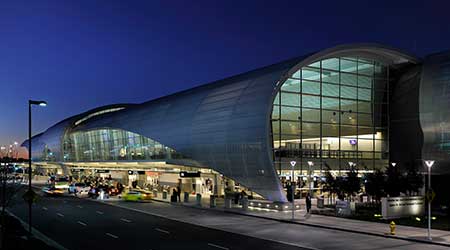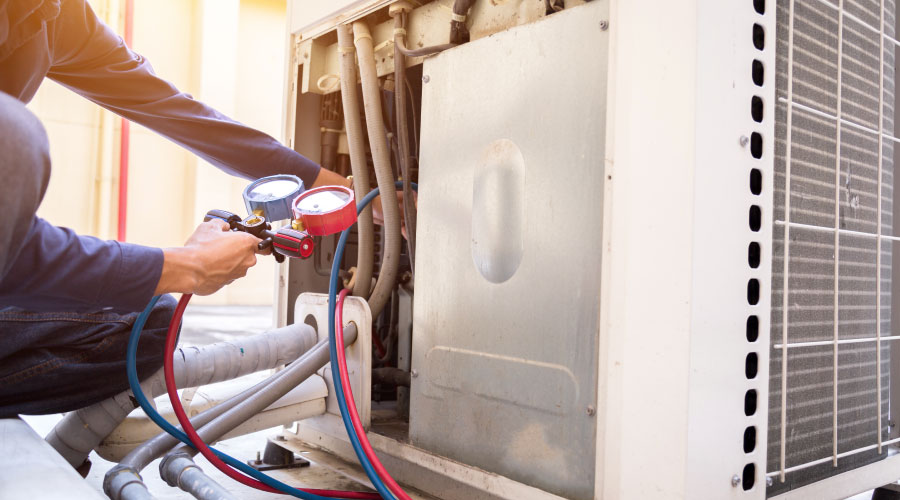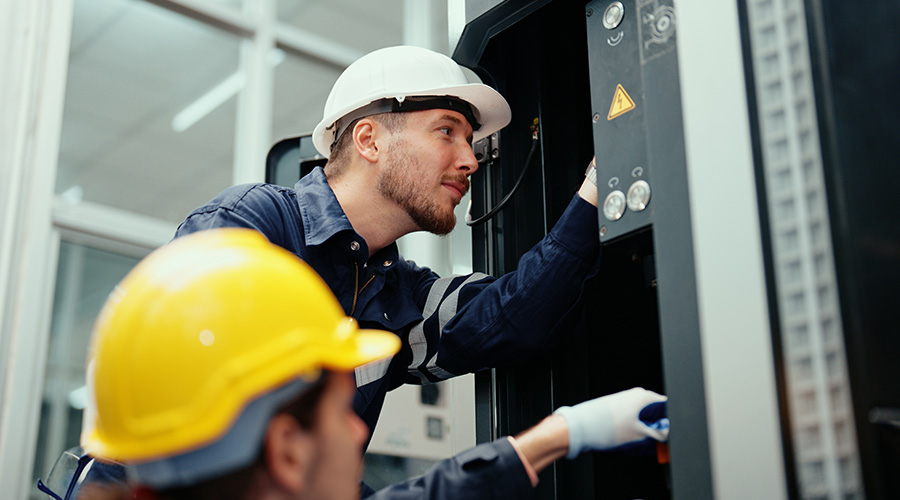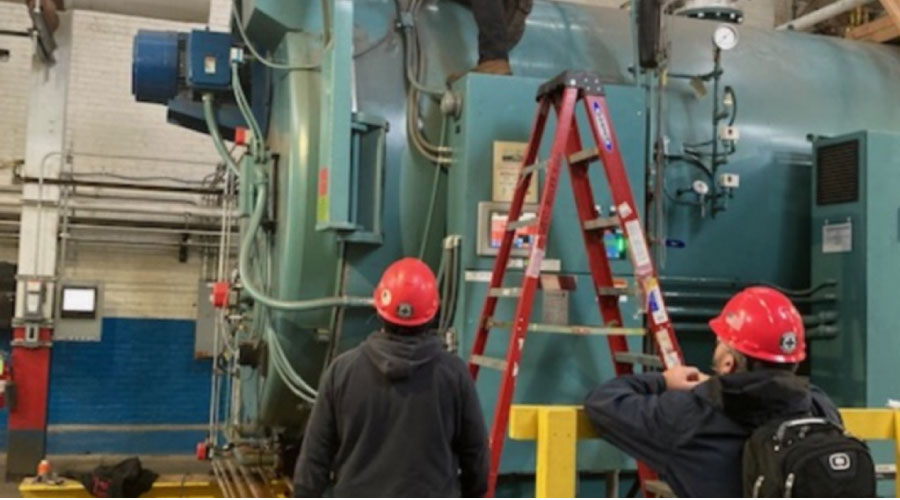 The Mineta San Jose International Aiport's boiler replacement nad central plant upgrade were the first projects in a series of HVAC and related upgrades that increased the facility's energy efficiency.Mineta San Jose International Airport
The Mineta San Jose International Aiport's boiler replacement nad central plant upgrade were the first projects in a series of HVAC and related upgrades that increased the facility's energy efficiency.Mineta San Jose International AirportAirport Navigates HVAC Issues During Central Plant Expansion
Part two of a three-part article on San Jose Airport’s energy efficiency upgrades
The central plant expansion offered Crowley a familiar opportunity — to closely manage a complex project that was essential to the organization’s long-term success.
“Before coming to the airport, I had been working at the San Jose city hall as an owner’s rep, so that’s what the airport hired me for — being a representative for the facilities division for the expansion project,” he says. “The best way of describing it is stakeholder. I didn’t specifically pick the equipment, but we reviewed it and accepted it and oversaw the construction management firm that actually ran it for us. We had a design-build entity that did all of the heavy lifting for us, along with a review from us.”
The central plant upgrade project presented Crowley and his team with several unforeseen challenges.
“This, like most $700 million, construction programs, presented challenges along the way with upgrading a critical system within an operating facility,” he says. “The first big issue that we ran into was that as we went to replace the boilers, we took the system offline. It was in the summer, so it was no big deal. But it turns out that, partly due to age and partly due to the types of connections on the pipes, when the loop cooled, the mechanical joints started to leak throughout the building.
“That was a major issue because the water features inside are kind of nice but not when they come from the ceiling. Part of the problem then was having to reschedule, which took a little bit longer for the entire project because we always had to keep one boiler online to keep the loop warm while we swapped out the other boilers and added a third one. The delay didn’t impact the overall program, just the central plant phase, which took a little bit longer.”
A second challenge during the central plant expansion involved the natural gas supply to the project.
“Although the literature indicated that we had appropriate gas supply, the original piping couldn’t handle the medium pressure that the new boilers required, even though it was sized appropriately,” Crowley says. “So when we went to fire up the boiler, it would starve one or the other boiler if you had to run them parallel. We knew that if we took the system off line, we would have leaks inside. Instead of upsizing that gas line, we ran a parallel gas line so we would have enough pressure to each of the boilers. That’s how we resolved that one. It wasn’t a huge problem, but it wasn’t anticipated.It cost a little bit of time and money, but the fix was relatively easy.”
Airport officials hoped to increase the energy efficiency of the central plant equipment by adding the power of a building automation system, but the implementation added a third challenge to the project.
“It turns out the head-end software for the controls for the boilers and the building automation system, although they are both BACnet, would not talk to each other,” Crowley says. “Instead of being able to control the boilers with the building automation system, all we can do is get alerts.
“If we have a boiler that goes offline or exceeds a setpoint because it is too cold or too hot, it notifies us by a page. But the staff member has to go to the controls to handle it. We have to have an on-site presence instead of having remote access. We had both manufacturers out for months, and this was the best that they could do.”
Related Topics:














